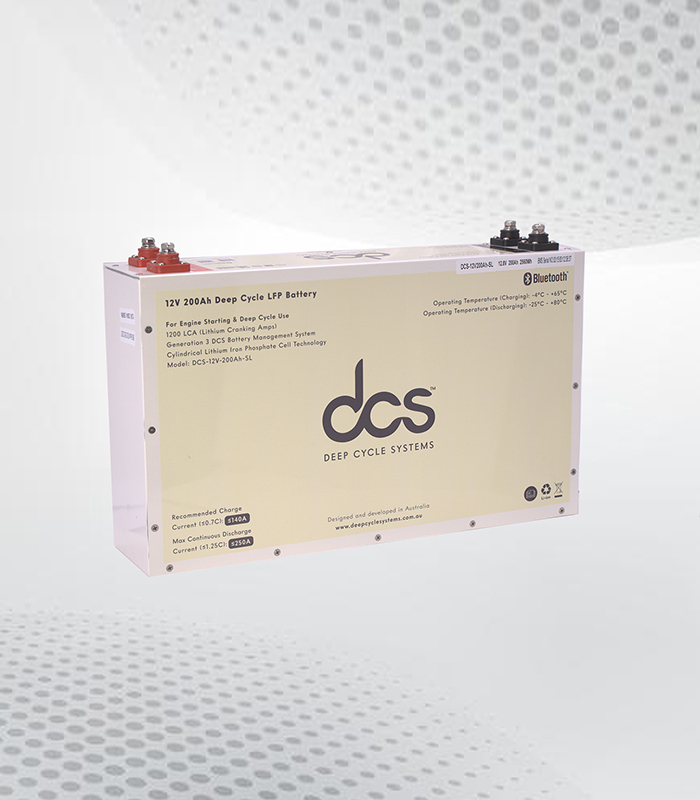Lifepo4 Lithium Battery systems have been making waves regarding energy storage solutions in the industry. Known for their superior performance, longevity, safety features, and environmental benefits, LiFePO4 batteries are becoming increasingly popular in various applications.
With the capacity to deliver consistent performance over thousands of charge-discharge cycles, LiFePO4 batteries exemplify resilience and reliability. Their minimal environmental impact aligns with global efforts towards adopting cleaner energy sources, reflecting a commitment to sustainability. This blog post will explore the aspects that make LiFePO4 batteries stand out.
Understanding the Basics of LiFePO4 Lithium Batteries
LiFePO4 lithium batteries, or lithium iron phosphate batteries, significantly advance rechargeable battery technology. They are distinguished by their unique chemical composition, which contributes to their standout performance metrics. These batteries are characterized by their robust energy storage capacity.
- At their core, LiFePO4 batteries use lithium-ion moving between the anode and cathode. Still, using iron phosphate as the cathode material imbues them with their inherent safety and longevity features.
- The structural integrity of the iron phosphate cathode offers enhanced stability under thermal and physical stress compared to other lithium-ion chemistries.
- This stability contributes to the batteries’ safety profile by reducing the risk of overheating and subsequent thermal runaway and also plays a crucial role in extending the cells’ lifespan.
- Furthermore, while the energy density of LiFePO4 batteries is not the highest among lithium-ion variants, it is sufficiently high to make them suitable for various applications, ranging from portable electronic devices to large-scale energy storage systems.
- Additionally, the electrochemical performance of LiFePO4 batteries is noteworthy.
- They exhibit a consistent discharge voltage, which ensures a stable power supply throughout the discharge cycle, a feature highly valued in applications requiring a reliable power source over extended periods.
LiFePO4 batteries offer a compelling combination of safety, durability, and performance efficiency. They can endure numerous charge-discharge cycles with minimal loss in capacity.
The Remarkable Longevity of LiFePO4 Batteries
A defining attribute of LiFePO4 batteries that sets them apart in energy storage is their exceptional lifespan. With the capacity to endure upwards of 2000 charge-discharge cycles, these batteries present a formidable solution for applications necessitating resilience and dependability over prolonged periods.
This remarkable longevity is underpinned by the battery’s robust chemical composition and the inherent stability of the iron phosphate cathode. Such durability ensures sustained performance across the battery’s life and translates into significant economic advantages by minimising the need for frequent replacements.
Moreover, LiFePO4 batteries’ resilience to adverse conditions such as high temperatures further amplifies their lifespan, ensuring their integrity and functionality even under demanding situations. This aspect is particularly advantageous in contexts where reliability cannot be compromised, from critical medical devices to backup power systems.
Therefore, the prolonged lifecycle of LiFePO4 batteries underscores their superior quality and reliability and affirms their status as a prudent choice for many applications, from everyday consumer electronics to large-scale industrial projects. Their ability to reliably store and deliver power over many years positions LiFePO4 batteries as a cornerstone of sustainable energy solutions, aligning with the broader objectives of longevity, efficiency, and environmental stewardship in energy management.
Unparalleled Safety Features of LiFePO4 Technology
One of the most distinguishing factors of LiFePO4 batteries is their unmatched safety standards. Compared to their lithium-ion counterparts, these batteries have a much lower propensity for thermal runaway.
In this condition, an increase in temperature leads to further temperature increases, potentially causing combustion. This inherent safety characteristic is primarily due to the stable chemistry of the iron phosphate cathode, which significantly mitigates the risks of explosions or fires that are sometimes associated with lithium-ion batteries.
Also, LiFePO4 batteries are designed to withstand rigorous conditions without compromising safety. They are robust against overcharging, deep discharging, and extreme temperatures, reducing the likelihood of hazardous situations. Their operational safety is enhanced by the fact that they do not release toxic gases or chemicals even when damaged, unlike some other types of batteries, which can pose health and environmental risks in the event of a breach.
These features make LiFePO4 technology appealing in applications where safety cannot be compromised, such as electric vehicles, residential energy storage systems, and portable electronics. The peace of mind provided by the enhanced safety profile of LiFePO4 batteries underscores their suitability for a broad spectrum of uses, reinforcing their reputation as a secure and reliable choice for powering the future.
The Environmental Edge of Using LiFePO4 Batteries
LiFePO4 batteries herald a significant step forward in mitigating the environmental impact traditionally associated with energy storage systems. Manufactured from lithium, iron, and phosphate, abundant materials with a lower ecological footprint, these batteries embody a greener alternative within the lithium-ion family. The eco-friendly nature of LiFePO4 technology is further underscored by the absence of heavy metals such as cobalt, which is often criticised for its environmental and ethical concerns in mining processes.
The production process of LiFePO4 batteries is inherently less harmful to the environment, reducing hazardous waste and promoting sustainability. Their extended lifespan, a hallmark of their design, is also pivotal in environmental conservation. By enduring more charge and discharge cycles before needing replacement, LiFePO4 batteries diminish the frequency of battery disposal, thereby lessening landfill waste and the subsequent release of harmful chemicals into ecosystems.
Moreover, the energy efficiency of LiFePO4 batteries contributes to lower carbon emissions during their operational life. Their ability to maintain a high level of performance with minimal energy loss during both charging and discharging processes results in more efficient use of electricity generated from renewable sources, aligning with global efforts to transition towards greener energy systems.
In essence, LiFePO4 batteries offer an environmentally conscious energy storage solution, aligning with the growing demand for sustainable technologies and practices in energy consumption and production. Their adoption supports the shift towards low-carbon energy systems and promotes the principles of circular economy in the battery industry.
Versatile Applications of LiFePO4 Batteries
LiFePO4 batteries find their application in various sectors, showcasing their adaptability and robust performance under diverse conditions. Their unparalleled energy storage capabilities make them ideal for powering electric vehicles (EVs), where safety, energy density, and longevity are paramount. Renewable energy batteries are the backbone for solar panel systems and wind turbines, efficiently storing the erratic energy produced and ensuring a steady supply. Their high cycle life and stability also render them perfect for use in portable electronics, such as laptops and smartphones, providing reliable power without the risk of overheating or degradation over time.
Moreover, the characteristics of LiFePO4 batteries have led to their adoption in more demanding industrial applications. They are increasingly favoured in developing power backup systems for critical infrastructure, telecommunications, and medical equipment, where failure is not an option.
Even in less conventional areas, such as marine applications and recreational vehicles, the benefits of LiFePO4 technology are being harnessed, offering users both power and peace of mind. This broad spectrum of applications demonstrates the versatility of LiFePO4 batteries and their growing importance in driving forward a future powered by clean and reliable energy.
Maintaining and Maximising Your LiFePO4 Battery
Ensuring your LiFePO4 battery operates at peak efficiency involves adhering to certain best practices in maintenance and charging routines. To circumvent potential issues and safeguard the battery’s longevity, it’s crucial to prevent instances of overcharging and avoid allowing the battery to discharge too deeply. Storage conditions play a significant role; therefore, keeping the battery in a cool and dry environment is advisable when it is not active.
Conducting periodic checks on the battery’s state of charge and voltage levels can prove instrumental in maintaining its health and operational efficacy. Such preventative measures contribute to extending the battery’s useful life and ensure it continues to provide reliable performance across its lifespan.
Implementing a controlled charging protocol that aligns with the manufacturer’s guidelines is also paramount. This includes utilising a compatible charger designed explicitly for LiFePO4 batteries to ensure the charging process is optimised for the battery’s unique chemistry and requirements. By following these guidelines, users can maximise the potential and longevity of their LFP battery, thereby enhancing their energy storage solution’s overall efficiency and reliability.
Future Trends: The Evolution of LFP Battery Technology
The trajectory of LFP battery technology is set towards transformative innovations, promising a new horizon in energy storage solutions. Advancements in materials science are at the forefront of this evolution, with researchers delving into novel compounds that could further stabilise the already robust LiFePO4 chemistry, enhancing energy density and discharge rates.
A particular area of interest is the integration of nanotechnology, which is expected to significantly reduce charging times and increase the power output of these batteries. This approach could revolutionise the usability of electric vehicles and renewable energy storage systems by offering faster, more efficient charging cycles.
Additionally, efforts are being channelled into improving the manufacturability and scalability of LiFePO4 batteries. Cutting-edge manufacturing techniques are being developed to streamline production processes, reduce costs, and make LiFePO4 batteries more accessible to a broader market. These advancements can accelerate the adoption of clean energy technologies and electric mobility globally.
Emerging trends also suggest a growing emphasis on circular economy principles within the battery industry. Innovations in recycling processes for LiFePO4 batteries are expected to enhance the sustainability of these energy storage solutions, ensuring that the materials can be efficiently recovered and reused, thereby minimising environmental impact.
As we look towards the future, it is clear that LFP battery technology will continue to evolve, driven by a commitment to innovation, sustainability, and the pursuit of superior energy solutions.
Conclusion
Lifepo4 Lithium Battery packs emerge as a superior choice for diverse energy storage needs, marking a significant advancement over traditional lithium-ion counterparts. Their unparalleled safety, efficiency, and durability blend positions them as an ideal solution across various sectors. The unique chemistry of these batteries ensures a stable and safe power supply and advocates for a greener and more sustainable approach to energy storage. Their role in fostering the adoption of renewable energy sources and powering the next generation of electronic devices and electric vehicles is undeniably crucial, underscoring their significance in the landscape of modern energy solutions.
FAQs
Certainly, LiFePO4 batteries have garnered attention for their unique properties and advantages in energy storage. Here are some frequently asked questions that shed light on common queries regarding these batteries:
Are Lifepo4 Lithium Battery packs safe to use?
Indeed, one of the standout features of Lifepo4 Lithium Battery packs is their safety profile. They exhibit a significantly lower risk of experiencing thermal runaway, which can lead to overheating and potential hazards in other lithium-ion batteries. This safety aspect is attributed to the stable chemistry of the iron phosphate cathode, which inherently mitigates risks associated with overheating and potential combustion.
How long do LiFePO4 batteries last?
One of the compelling attributes of LiFePO4 batteries is their longevity. These batteries can sustain over 2000 charge-discharge cycles with minimal degradation in performance. This remarkable cycle life makes them an enduring energy storage option, offering prolonged usability and reliability across numerous applications.
What are the environmental benefits of LiFePO4 batteries?
Due to their composition and lifecycle, liFePO4 batteries offer a greener alternative within the battery sector. Comprised of lithium, iron, and phosphate—more abundant and less environmentally damaging elements—the manufacturing and disposal process of these batteries pose fewer ecological concerns. Furthermore, their extended lifespan reduces waste, as they do not require as frequent replacement as other batteries, thereby aligning with sustainable energy practices and minimising their overall environmental footprint.





